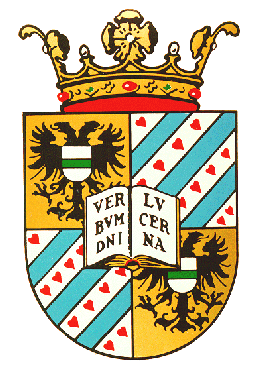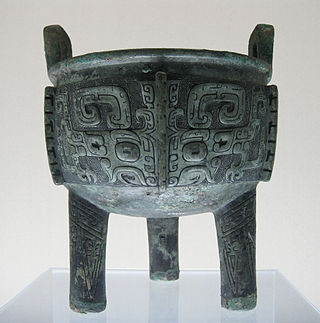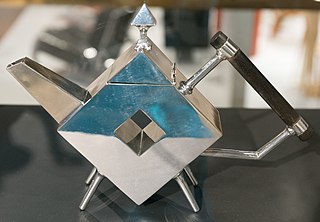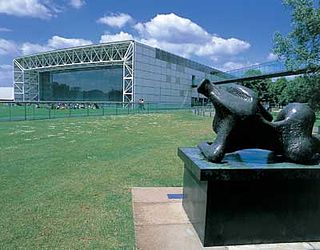Related Research Articles

Belief in magic exists in all societies, regardless of whether they have organized religious hierarchy including formal clergy or more informal systems. While such concepts appear more frequently in cultures based in polytheism, animism, or shamanism. Religion and magic became conceptually separated in the West where the distinction arose between supernatural events sanctioned by approved religious doctrine versus magic rooted in other religious sources. With the rise of Christianity this became characterised with the contrast between divine miracles versus folk religion, superstition, or occult speculation.

The University of Groningen is a public research university of more than 30,000 students in the city of Groningen in the Netherlands. Founded in 1614, the university is the second oldest in the country and one of the most traditional and prestigious universities in the Netherlands.

Ding are prehistoric and ancient Chinese cauldrons standing upon legs with a lid and two fancy facing handles. They are one of the most important shapes used in Chinese ritual bronzes. They were made in two shapes: round vessels with three legs and rectangular ones with four, the latter often called fāng dǐng "square ding (方鼎. They were used for cooking, storage, and ritual offerings to the gods or to ancestors.

Johan Huizinga was a Dutch historian and one of the founders of modern cultural history.

The Bard Graduate Center: Decorative Arts, Design History, Material Culture is a graduate research institute and gallery located in New York City. It is affiliated with Bard College, located in Annandale-on-Hudson, New York. The gallery occupies a six-story townhouse at 18 West 86th Street while the academic building and library are located at 38 West 86th Street.

The culture of Scotland refers to the patterns of human activity and symbolism associated with Scotland and the Scottish people. The Scottish flag is blue with a white saltire, and represents the cross of Saint Andrew.

The Yale Center for British Art at Yale University in central New Haven, Connecticut, houses the largest and most comprehensive collection of British art outside the United Kingdom. The collection of paintings, sculpture, drawings, prints, rare books, and manuscripts reflects the development of British art and culture from the Elizabethan period onward.

The Institute of Fine Arts (IFA) is a graduate school and research center of New York University dedicated to the study of the history of art, archaeology, and the conservation and technology of works of art. It offers Master of Arts and Doctor of Philosophy degrees in Art History and Archeology, the Advanced Certificate in Conservation of Works of Art, and the Certificate in Curatorial Studies.

The Department of Asia in the British Museum holds one of the largest collections of historical objects from Asia. These collections comprise over 75,000 objects covering the material culture of the Asian continent, and dating from the Neolithic age up to the present day.

The Anglo-Japanese style developed in the United Kingdom through the Victorian period and early Edwardian period from approximately 1851 to the 1910s, when a new appreciation for Japanese design and culture influenced how designers and craftspeople made British art, especially the decorative arts and architecture of England, covering a vast array of art objects including ceramics, furniture and interior design. Important centres for design included London and Glasgow.

The Islamic Arts Museum Malaysia is a museum in Kuala Lumpur, Malaysia. It was officially opened on 12 December 1998. The museum is the largest museum of Islamic arts in Southeast Asia with more than seven thousands artifacts from the Islamic world.

Hendrik Wagenvoort was a Dutch classical scholar. He was professor of Latin at the University of Groningen and Utrecht University and published extensively on subjects relating to the Latin language and Roman religion.
Danie Mellor is an Australian artist who was the winner of 2009 National Aboriginal & Torres Strait Islander Art Award. Born in Mackay, Queensland, Mellor grew up in Scotland, Australia, and South Africa before undertaking tertiary studies at North Adelaide School of Art, the Australian National University (ANU) and Birmingham Institute of Art and Design. He then took up a post lecturing at Sydney College of the Arts. He works in different media including printmaking, drawing, painting, and sculpture. Considered a key figure in contemporary Indigenous Australian art, the dominant theme in Mellor's art is the relationship between Indigenous and non-Indigenous Australian cultures.

Hardstone carving, in art history and archaeology, is the artistic carving of semi-precious stones, such as jade, rock crystal, agate, onyx, jasper, serpentinite, or carnelian, and for objects made in this way. Normally the objects are small, and the category overlaps with both jewellery and sculpture. Hardstone carving is sometimes referred to by the Italian term pietre dure; however, pietra dura is the common term used for stone inlay work, which causes some confusion.
Hans T. Bakker is a cultural historian and Indologist, who has served as the Professor of the History of Hinduism and Jan Gonda Chair at the University of Groningen. He worked in the British Museum as a researcher in the project "Beyond Boundaries: Religion, Region, Language and the State".
Ernst Heinrich Kossmann, often named as E. H. Kossmann in his books, was a Dutch historian. He was professor of Modern History at the University of Groningen in the Netherlands. His magnum opus is The Low Countries. History of the Southern and Northern Netherlands.

The Sainsbury Institute for Art (SIfA) is based in the Sainsbury Centre for Visual Arts at the University of East Anglia in the United Kingdom.

Standing Horse is a tomb figure created during the Tang dynasty in China. In ancient China, numerous tomb figurines and other artefacts were designed specifically to be buried with the deceased in large burial mounds. This large figurine features the use of Sancai, a glazing technique popular during the Tang dynasty.
Olga Palagia is Professor of Classical Archaeology at the National and Kapodistrian University of Athens and is a leading expert on ancient Greek sculpture. She is known in particular for her work on sculpture in ancient Athens and has edited a number of key handbooks on Greek sculpture.

Hajj: Journey to the Heart of Islam was an exhibition held at the British Museum in London from 26 January to 15 April 2012. It was the world's first major exhibition telling the story, visually and textually, of the hajj – the pilgrimage to Mecca which is one of the five pillars of Islam. Textiles, manuscripts, historical documents, photographs, and art works from many different countries and eras were displayed to illustrate the themes of travel to Mecca, hajj rituals, and the Kaaba. More than two hundred objects were included, drawn from forty public and private collections in a total of fourteen countries. The largest contributor was David Khalili's family trust, which lent many objects that would later be part of the Khalili Collection of Hajj and the Arts of Pilgrimage.
References
- ↑ "CEASG welcomes Oliver Moore, first Chairholder Chinese at the University of Groningen". 10 October 2016.
- ↑ "CEASG welcomes Oliver Moore, first Chairholder Chinese at the University of Groningen". 10 October 2016.
- ↑ "Inaugural lecture Oliver Moore|Facts, Fictions and Attitudes: Common Tactics for Representing China". 24 May 2017.